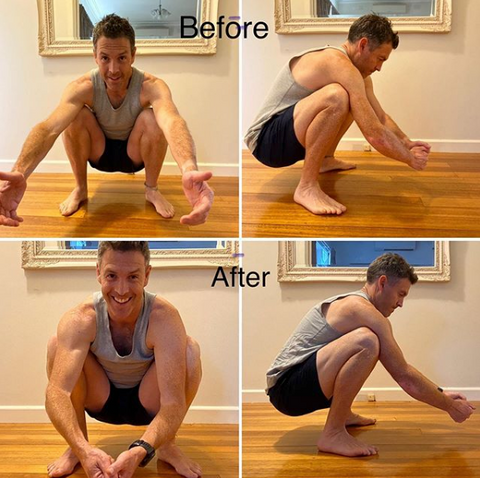We’d like you to meet Andy Bryant one of our favourite podiatrists. With over 19 years of experience, Andy works in a caring and practical way to improve your foot health, as he believes it is an integral part of a person’s general well-being. Andy hopes his work reflects the passion he has for holistic health and fitness. He is currently personally researching minimalist footwear and the barefoot movement, noticing the benefits these approaches can have for patients in what has been a more ‘traditional’ podiatry setting.
With kids headed back to school soon, we wanted to get Andy’s opinion on what footwear is best for your little ones and how to help them develop strong, healthy feet!
1. What is the benefit of Children being barefoot?
“There are many benefits of a child (and adult!) being barefoot.
Bones, joints, muscles, tendons and ligaments develop as they are intended to, without interference from restrictive footwear and with the sensory feedback that helps them develop into mobile, adaptable and strong feet.
Proprioception (the sense of one’s body position and movement in space) is best developed with the sensory input from the feet. The stimulus of varying surfaces and feet interacting with these surfaces feeds into this system, greatly contributing to balance and posture.
Being barefoot outside gives children the ability to connect with their environment, to feel the softness of the grass, the rough of rocks, the heat of sand on a hot day. The interaction with these aspects of nature can help ground children, focussing their attention and awareness and heightening their sensory feedback of the world around them.”
2. What age does a child’s arch form?
“There are three arches in the foot and the age at which they become apparent vary, much like most childhood developmental milestones. Often there is a fatty pad on the inside arch of a very young foot, making it look ‘flat’. Some kids have obvious arches as soon as they are walking, others may not have arches become obvious until over 6 years of age. The timing of this does not indicate a healthier foot or more athletic child. Arch heights vary from person to person with no ‘ideal’ height.”
3. What style of shoe is beneficial for an active primary school child, and why?
“The best type of shoe is one that best mimics being barefoot.
Therefore it should be flat from heel to forefoot to allow proper posture of the foot and in turn, the rest of the body.
It should have a thin sole with minimal padding, allowing different sensations of pressure and texture to be transferred. Too much padding dumbs down the feedback of the nervous system from the foot. This often leads to a heavier foot strike.
The sole should also be flexible so that the foot’s many structures can move and develop as they are made to.
The area around the toes should be the widest part of the shoe. This should be the widest part of our foot too. Most traditional school footwear or modern athletic shoes have a toe box that is widest at the joints before the toes, applying inward pressure on the toes. The natural splay of toes is extremely important in all feet, especially in the developing foot. A wide toe box allows for this natural spread and width of the foot.”
4. What foot exercises are beneficial for kids?
“Exercises may be prescribed for children that have a specific injury. However most of the time I advocate taking away the things that are causing the problems. That is more often than not, less than ideal footwear (cushioned, stiff, heeled and tight) and a lack of unstructured activity (playing!)
The best foot exercise for most children is to play a lot...barefoot!”
5. What is your opinion on children in orthotics?
“There are specific cases that require the use of foot orthoses. ‘IF’ they are required, they most often should be seen as a short-term measure to help through an injury or overload issue.
There are very few cases where orthoses are warranted long term, especially if there is a program of rehabilitation in place. This should include mobility, strengthening, correcting movement patterns, and especially for kids (but not only for them) lots of play, climbing, exploring and using their bodies in the varied ways that they are designed for!”
We would like to thank Andy for sharing his knowledge of children’s foot health. To find out more about minimal footwear and the benefits of movement, visit the Sole Mechanics team in-store.
Otherwise, if you’d like to book in to see Andy Bryant, you can contact him via email at andyb.footnerd@gmail.com

Andy working on his squatting ability.

Andy’s son wearing Vivobarefoot while he plays basketball.


